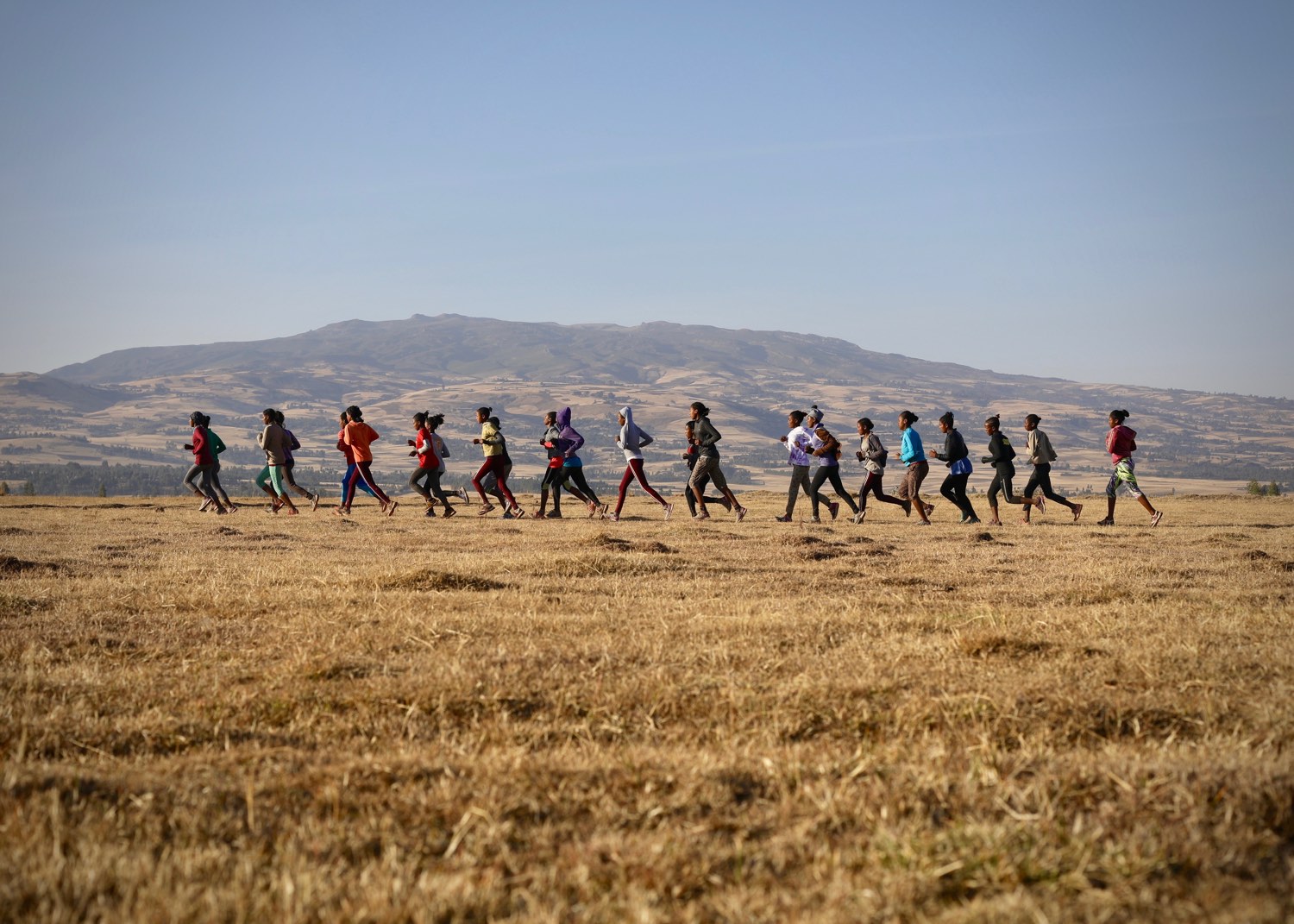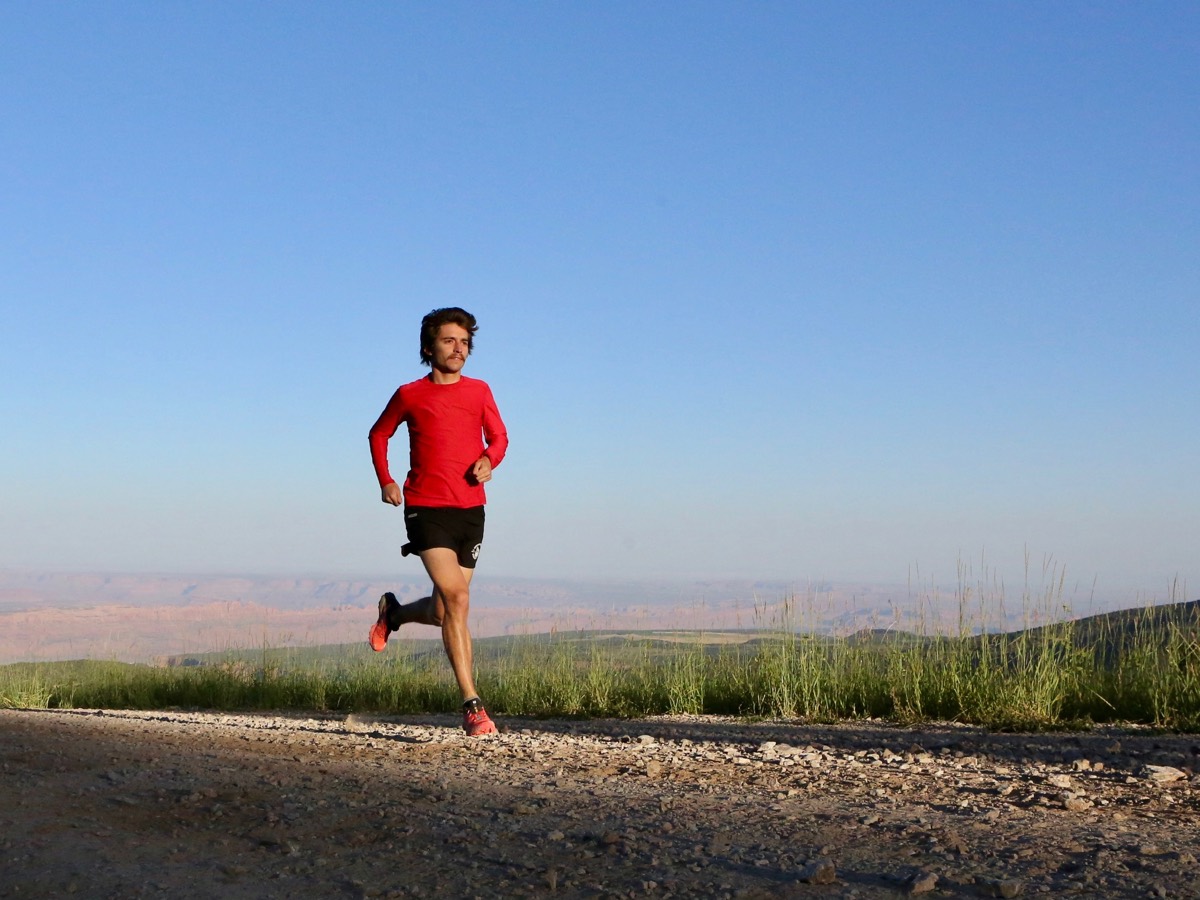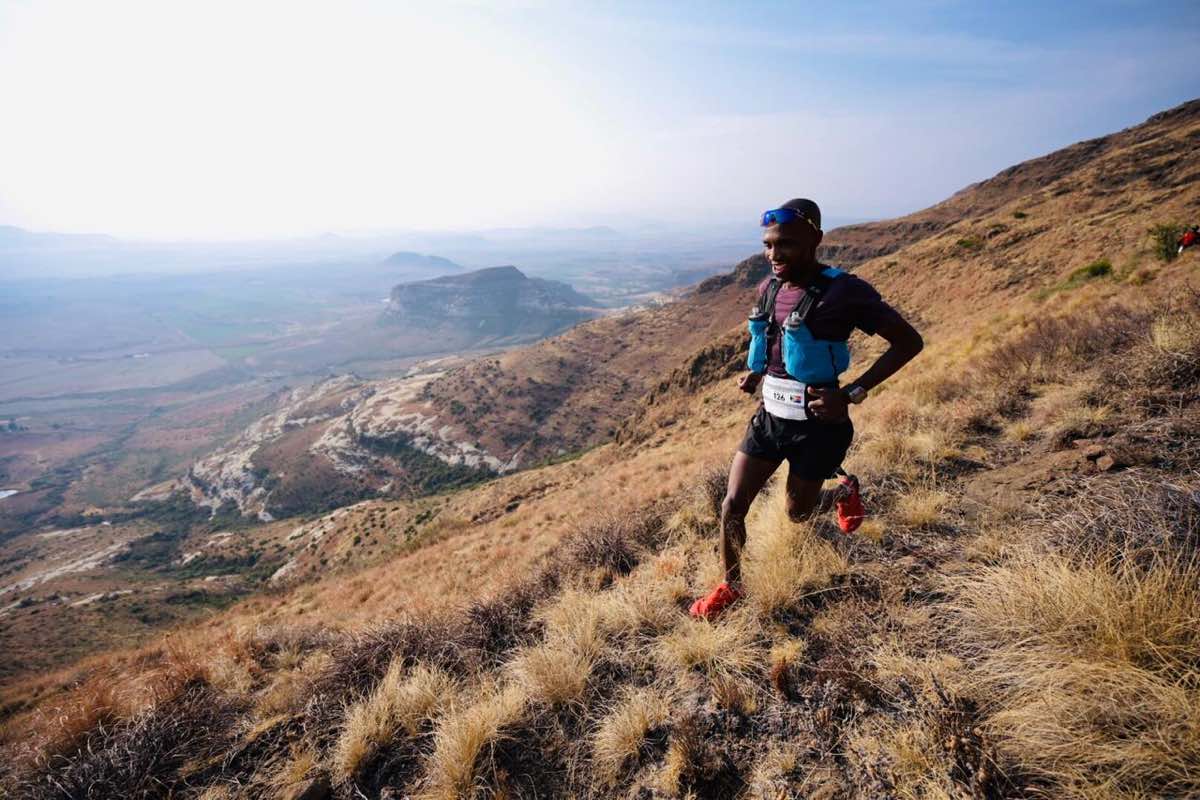Taking part in regular aerobic exercise is widely considered good for our health, including being a way of lowering all-cause mortality – exercise keeps us alive and well longer. You’ve probably heard the recommendations from organizations like the American Heart Association that it’s important to get 150 minutes of moderate-intensity aerobic activity or 75 minutes of vigorous aerobic activity per week for health and longevity (2).
It’s safe to say that the ultra-endurance community likes to overachieve in this category, with many of us training six hours (360 minutes) or more most weeks. That leads to this question: is this activity we love, and that is generally good for us, sometimes too much?
A group of sports scientists and medical specialists from family medicine, sports medicine, cardiology, internal medicine, pediatrics, and orthopedics recently collaborated to try to answer that exact question. In this article, we’ll discuss the paper that is the result of this collaboration, titled “Potential Long-Term Health Problems Associated with Ultra-Endurance Running: A Narrative Review.” It was published just a month ago in the major scientific journal Sports Medicine. In the scientific literature, a narrative review is a comprehensive exploration of all the previously published research on a topic, to try and elucidate what the most current understanding is on that topic.
The paper’s title immediately piqued my interest as it struck me as a little doom and gloom and so my pragmatic side wanted to see what it was all about. The authors evaluated the strain of ultra-endurance events body system by system with the understanding that there is important interplay between said physiological systems when it comes to ultra-endurance performance. We will break down their findings for you, one major body system at a time, and summarize the biggest takeaways at the end.
Cardiovascular System
The cardiovascular system, made up of your heart and circulatory system (veins and arteries), is the organ system that feels the biggest impact of ultrarunning in positive, maybe negative, and yet-to-be-fully-understood ways. As stated earlier, we know regular aerobic exercise reduces all-cause mortality (an epidemiology term for death from any cause) and reduces the risk of cardiovascular disease (3).
You’ve likely heard the phrases, “the heart is a muscle” and “athletes have bigger hearts,” and they’re pretty accurate. The heart is made up of cardiac muscle tissue, and just like any muscle, use creates change, and often growth. The literature has shown that chronic endurance exercise can change the heart in some individuals in four known ways; 1) the size of some parts, 2) the way it beats, 3) scarring of some of its tissues, and 4) the calcification of some of its tissues. Altogether, these changes are referred to as “athlete’s heart” (4).
That might all sound alarming, and that’s because in a non-endurance population those would be indicators that a person is at an elevated risk for several heart problems. The enlargement of the various chambers of the heart and calcification of its tissues (coronary-artery plaques) outside of an endurance-athlete setting would be particularly concerning and indicate medical conditions like coronary artery disease, aortic stenosis (narrowing of aortic valve opening), atrial fibrillation (irregular heart rhythm), and hypertension (high blood pressure).
Curiously, however, in endurance athletes with athletes’s heart, where the changes seem to have been brought on by endurance exercise, these serious heart diseases are seen very rarely, and perhaps mostly in individuals who have additional risk factors for heart disease such as genetics and lifestyle.
The takeaway here is that ultra-endurance events and training are generally safe; however, some athletes may be more susceptible to negative consequences if they have underlying medical conditions. I’m not recommending you rush out to get a work-up of your heart, but this is why the NCAA in the U.S. and many European trail races require cardiac medical clearance to participate. More research is needed in this area, and as always, if you have any concerns, you should consider discussing them with your health-care provider.
Respiratory System
Our respiratory system is made up of our nose, pharynx, larynx, trachea, bronchi, and lungs. This important system is responsible for inhaling oxygen-rich air into your body and exhaling carbon dioxide back out into the environment.
We place a lot of strain on these tissues during exercise, largely due to increased ventilation, or how many breaths you take per minute. At rest, you breathe 12 to 16 times per minute, inhaling about five to eight liters per minute. During exercise, that increases to 40 to 60 breaths per minute and upward of 35 to 60 liters or more per minute. That’s a huge increase in demand.
This can cause water evaporation from the airway liquid that makes up the lining of your bronchioles, and this drying effect can cause a release of inflammatory mediators, like histamines. In turn, this can cause the smooth muscle of your bronchioles to constrict, mucus to build up, and inflammation to occur. This whole cascade is called exercise-induced bronchoconstriction, formerly known as exercise-induced asthma.
You might be thinking to yourself, Well, I don’t have that, but I do sometimes have a cough after a hard, cold, dry, or dusty race. It’s similar! That coughing is caused by the same cascade. It is not considered serious as a one-off event, but repeated bouts can cause some athletes to develop a chronic condition requiring medical intervention so they can run. While this is not as common in ultrarunning as it is in sports like cross-country skiing, hockey, and swimming, more research needs to be done specifically looking at incidence to know how prevalent it is.
This is another reason why running in extreme cold (below -4 degrees Fahrenheit) or wildfire smoke (or general poor air quality) can have deleterious effects over time.
The big takeaway here is, ventilating is hard on our bodies, but the incidence of specific respiratory conditions tied to ultrarunning is lower than in other endurance sports. To learn more about this, read our breathing conditions article.

Kaytlyn Gerbin on her way to setting a new women’s supported fastest known time on the Wonderland Trail in Washington state in 2020. Photo: Ryan Thrower
Musculoskeletal System
The musculoskeletal system is made up of your bones, cartilage, ligaments, tendons, and connective tissues. It provides the framework for your muscles and soft tissues to not only hold you upright, but get you down the trail.
Injuries to this system are rampant in ultrarunning — maybe you are like me and slowly recovering from one right now. What is most striking, is that 90% of these injuries are a matter of overuse (as opposed to traumatic). What that means is 90% of our injuries are also likely preventable!
Most of these injuries involve the lower limbs and particularly impact the foot, ankle, and knee. Where recreational running is often positive for improving bone density, regular high volume running can potentially decrease bone strength, specifically in the feet, leading to an increased risk of stress fracture. The same can be said for the larger joints, both at the hip and knee, where recreational running has been shown to cause a lower occurrence of hip and knee osteoarthritis in comparison to the general population, while competitive running causes a higher occurrence.
Bone stress injuries seem to be one of the largest risks with a relatively high occurrence of 5% to 22% overall. About 21% of women report bone stress injuries associated with endurance training, and they seem to be at higher risk due to increased risk of and impact from inadequate energy intake.
These incredibly common injuries are largely caused by overuse, and we are thus effectively captains of our own destiny here.
Renal System
The renal system, made up of your good ol’ kidneys, ureters, bladder, and urethra, is important when it comes to regulating your blood volume and blood pressure, controlling levels of electrolytes, and eliminating waste from your body.
You’ve heard of and we’ve written about rhabdomyolysis, often referred to as rhabdo, which is the breakdown of skeletal muscle tissue. When muscle is damaged during exercise, a protein called myoglobin is released into the bloodstream and then is filtered by the kidneys. When this done to the extreme, like in an ultra, it places strain on the kidneys.
Additionally, during exercise, blood flow is reduced to the kidneys because it is sent to working muscles as well as the skin’s surface when it’s hot. This reduction in blood flow causes additional strain on the kidneys, resulting in diminished function. This is also why the ingestion of nonsteroidal anti-inflammatory drugs (NSAIDs – like Ibuprofen) are also discouraged during ultras because they additionally slow blood flow to the kidneys.
Putting all of this together, you can see just how hard the kidneys have to work and how an acute kidney injury (AKI) can come about.
Though it seems many of us should have lab results indicating kidney stress after an ultra, the actual incidence of a kidney injury requiring hospital care is low. However, we don’t yet understand if an accumulation of acute kidney injuries could lead to a more serious medical condition like chronic kidney disease. Perhaps the biggest worry and a key takeaway is that because most cases of AKI are asymptomatic, many go undetected during and after an ultra, making long-term research on AKI and chronic kidney damage challenging.
Gastrointestinal System
The gastrointestinal (GI) system is made up of your mouth, pharynx, esophagus, stomach, small intestine, large intestine, rectum, and anus. This system is responsible for digesting food to extract nutrients and absorb energy before expelling the rest as waste.
This seems simple enough until you think about how 50% to 80% of us have experienced GI distress during ultra training or racing. Due to many reasons, including not practicing your race-day fueling before races, one of the big reasons is that, similar to the kidneys, blood is needed elsewhere when you are running, to bring oxygen and energy to your muscles and to help cool you down when it’s hot. This is referred to as splanchnic hypoperfusion (which we’ve also written about) and essentially it means that blood flow is being directed away from the tissues that make up your GI tract.
In some serious cases, generally combined with dehydration, you can create oxygen-deprived conditions, injuring and sometimes seriously damaging the tissues of your intestines and colon. This damage, when repeated over and over again, similar to the respiratory system, could cause more long-lasting issues including a leaky gut (increased intestinal permeability) and a decreased ability to absorb nutrients and minerals like iron.
Immune System
Unlike the other more tangible systems, the immune system is made up of micro elements, namely your white blood cells that protect you from foreign invaders. Similar to the cardiovascular system, we know that regular exercise actually boosts the function of your immune system. However, following particularly long or hard training sessions or a race, you experience short lasting — we’re talking several hours — suppression of your immune system. This narrow window of time puts you at a subclinical risk of viral and bacterial infections.
The immune system is also sensitive to overstress, including sleep loss and periods of overreaching which can result in longer-lasting immune dysfunction. Hence, non-functionally overreached athletes are more likely to pick up common minor infections.
The big takeaway here is to be cognizant of training load and other exertion in and around racing to prioritize recovery.
Neurological System and Psychological Function
Your neurological system is made up of your brain and spinal cord, including your nervous system. While there is limited research done on brain function in ultrarunning, there are two key takeaways. First, lifelong endurance training helps maintain cortical brain reserve, or grey matter, which is likely neuroprotective and can have a huge positive impact on neurological health later in life.
Second, harkening back to our article on mental health in ultrarunning, the prevalence of depression and other common mental health diseases are higher in athletes participating in ultra-endurance events than in the general population. It is not yet understood if this is to some degree caused by endurance sports or if people with underlying depression, anxiety, or other mental health disease are drawn to ultra-endurance events as a form of self-medication.
Integumentary System
Last but not least, we have the integumentary system, which is made up of our largest organ, our skin! Due to the nature of our sport, being exposed to the elements for a really long time, sometimes up high where there is greater ultraviolet light exposure, it’s not surprising that ultrarunners experience dermatological problems. Ultra-endurance athletes are at a higher risk for pre-malignant and malignant skin cancers.
Despite this increased risk, only 62% of ultrarunners report using sunscreen, 52% utilize a hat, and 7.4% utilize protective clothing. This is a system with a straightforward connection between what we do and a negative health consequence, like overuse injuries in the musculoskeletal system, so it’s up to us to heed that advice.
Are There Special Considerations for Specific Demographics?
The authors also wanted to consider participation trends, given that the research we have is largely from a homogenous group of college-aged males. Over the past few decades, the variety of ultra-endurance participants has grown exponentially, largely due to an increase in female and masters athletes (35 years and older) predominantly at the 50k and 100k distances.
At the same time, we have also seen a large increase (though slightly less dramatic than the adult growth) in youth participation (under 19 years old) in ultra-endurance events. Akin to adults, the most popular distances amongst youth athletes are 50k and 100k events with most of the young athletes between 16 to 18 years of age — although some participants were even younger than 13 years of age.
With these groups frequently left out of research due to various factors, what is important to keep in mind from a long-term health perspective in them?
Youth Athletes
I’m likely opening a can of worms here, and I hope to dedicate an article to this in the future, but there are a lot of question marks around this growing population within the sport of ultrarunning. That question being, is it safe for youth athletes to compete in ultra-endurance events?
The biggest concern posed by the researchers is that the impact of ultrarunning on development of key organ systems is unknown. There has only been one retrospective study to date, and while injury rates seem to trend with the adult population, the more striking finding was that only 27% continue to run ultras as adults.
Additionally, while many cited positive effects from running ultras as young athletes, only 21% would recommend youth athletes participate in ultras.
Masters Athletes
You may think that 35 years old is far too young to be a masters athlete, but this is how it’s defined in the literature. Interestingly, it’s also the exact average age in which someone currently runs their first ultra, which also means that peak performance is also attributed to older age in our sport.
This might be due to the importance of experience, particularly in longer ultras, but it might also be due to the importance of accumulating a large aerobic base and having had time to build that. While the literature suggests this is a healthy demographic in comparison to the general population, age should be considered an important variable in ultra research.
Female Athletes
It’s hard to talk about what the literature has to say about female athletes in ultra-endurance sports for many reasons. First, fewer women compete in them — particularly in races over 50k in length. And two, women are often excluded from research because they are erroneously deemed complicated research subjects due to having hormonal fluctuations attached to the menstrual cycle.
What this means is that important physiological components and considerations for both training and racing healthfully have always been and continue to be geared toward males. Until addressed, this lack of specificity might be one factor for why women have less longevity in the sport.
The most pressing research area right now is addressing relative energy deficiency in sports (RED-S). While males are also impacted by RED-S, females seem to bear the consequences of it more rapidly and profoundly because of interactions with menstrual function and bone health.

The Girls Gotta Run team warms up ahead of a speed workout in the grass fields of Bekoji, Ethiopia. Photo: iRunFar/Meghan Hicks
The Key Takeaways
- Participating in ultra-endurance training and racing rarely causes serious adverse health events, and the many benefits of general endurance training outweigh the possible risks. That said, there is likely a small (but growing as the sport grows) subset of the population with underlying health conditions that could be impacted more severely by high training volume and the high physiological requirements of ultra-endurance races.
- See your health-care provider if you have concerns, and annual preventative health screenings are good for you and your loved ones.
- While other endurance sports seem to be more plagued with breathing issues caused by the sport itself, we still ventilate really hard. Doing so in adverse environments frequently can cause long-term damage to your airway surfaces.
- Some 90% of running musculoskeletal injuries are overuse related. When I ask a physical therapist, “How do runners avoid X or Y?”, their response is almost always, “Don’t do too much.”
- Your kidneys take a beating for many reasons while running, and you can make that worse by ingesting nonsteroidal anti-inflammatory drugs (NSAIDs) and/or becoming dehydrated. More research needs to be done on the cumulative effects of acute kidney injuries.
- Similar to kidneys, the demand on your gastrointestinal (GI) system, particularly on your intestines, is high when you run. Suffering from GI distress is not uncommon, and you can do things like practicing your nutrition plan and being mindful of thermoregulation. You can acutely hurt your intestines and GI issues that persist long after racing may warrant talking to your health-care provider.
- Though exercise is generally good for your immune system, it is mildly suppressed for several hours after hard and/or long training sessions and races. Chronic overreaching can cause much longer-lasting immune dysfunction, resulting in a higher incidence of infection.
- Endurance exercise is good for long-term brain health.
- Wear sunscreen and cover your skin.
Call for Comments
- Have you experienced any long-term health complications because of ultrarunning?
- Do you consider any health issues that come up as a result of the strain of our sport?
References
- Scheer, V., Tiller, N. B., Doutreleau, S., Khodaee, M., Knechtle, B., Pasternak, A., & Rojas-Valverde, D. (2021). Potential long-term health problems associated with ultra-endurance running: A narrative review. Sports Medicine. https://doi.org/10.1007/s40279-021-01561-3
- How much physical activity do you need? www.heart.org. (American Heart Association). Retrieved October 12, 2021, from https://www.heart.org/en/healthy-living/fitness/fitness-basics/aha-recs-for-physical-activity-infographic.
- Fiuza-Luces C, Santos-Lozano A, Joyner M, Carrera-Bastos P, Picazo O, Zugaza JL, et al. Exercise benefits in cardiovascular disease: beyond attenuation of traditional risk factors. Nat Rev Cardiol. 2018;15:731–43.
- Król W, Jędrzejewska I, Konopka M, et al. Left Atrial Enlargement in Young High-Level Endurance Athletes – Another Sign of Athlete’s Heart?. J Hum Kinet. 2016;53:81-90. Published 2016 Oct 14. doi:10.1515/hukin-2016-0012



